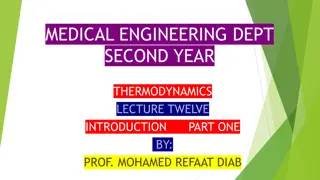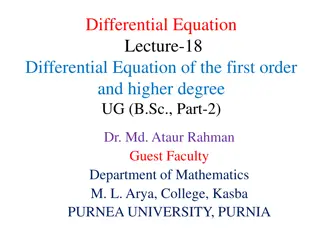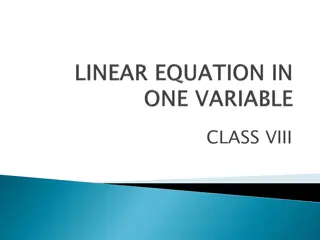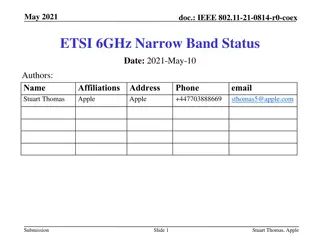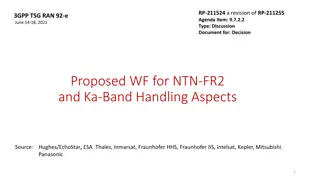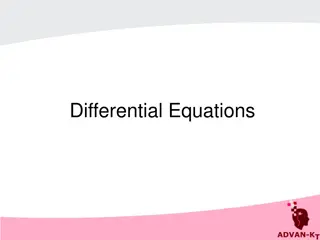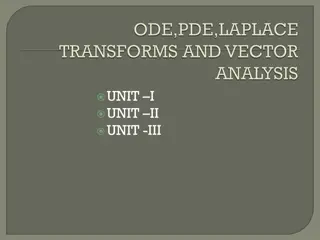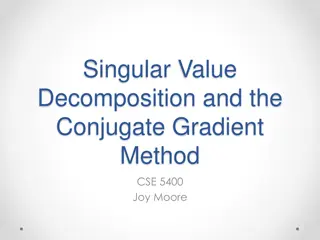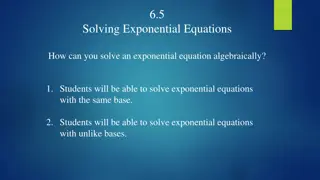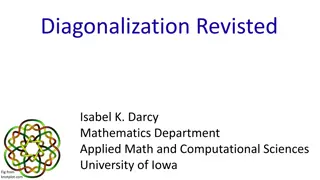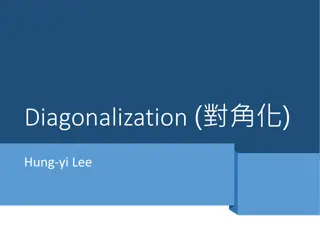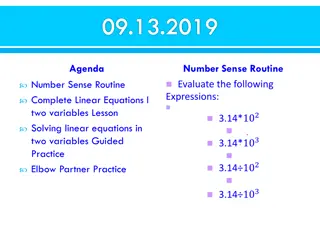Understanding Tridiagonal and Band Diagonal Systems of Equations
Tridiagonal and band diagonal matrices play a key role in solving systems of equations efficiently. A tridiagonal matrix has non-zero elements on the main diagonal, superdiagonal, and subdiagonal, while a band diagonal matrix allows non-zero elements anywhere around the main diagonal. The Thomas Algorithm is commonly used to solve tridiagonal systems of equations, involving forward sweep computations for efficient solutions.
Download Presentation

Please find below an Image/Link to download the presentation.
The content on the website is provided AS IS for your information and personal use only. It may not be sold, licensed, or shared on other websites without obtaining consent from the author. Download presentation by click this link. If you encounter any issues during the download, it is possible that the publisher has removed the file from their server.
E N D
Presentation Transcript
Tridiagonal and Band Diagonal Systems of Equations
Overview Definition Tridiagonal Matrix: a band matrix that has non-zero elements on the main diagonal, the first diagonal above the main diagonal (superdiagonal) and the first diagonal below the main diagonal (subdiagonal) only.
Tridiagonal Example Matrix The only non-zero elements in a tridiagonal matrix or on the diagonal, superdiagonal, and subdiagonal. The Main Diagonal elements are B11 - B66 The superdiagonal has elements B12 - B56 The subdiagonal has elements B21 - B65
Overview Definition Band Diagonal Matrix: a band matrix that has non-zero elements on the main diagonal, but is more relaxed in definition vs tridiagonal. Non-zero elements are allowed anywhere below or above the main diagonal.
Band Diagonal Example Matrix The only non-zero elements in a Band diagonal matrix or on the main diagonal, and either below (to the left of) the main diagonal m1 0 or above (to the right of) the main m2 0. The Main Diagonal elements are A11 - A66 The m1 0 has no listed elements The m2 0 has elements A12 - A56 and A13 - A46
Tridiagonal Matrix Algorithm (Thomas Algorithm) Given a Tridiag Matrix, work the Forward Sweep Computations:
Tridiagonal Matrix Algorithm (Thomas Algorithm) Given a Tridag Matrix, work the Forward Sweep Computations:
Tridiagonal Matrix Algorithm (Thomas Algorithm) Given a Tridag Matrix, work the Forward Sweep Computations:
Tridiagonal Matrix Algorithm (Thomas Algorithm) After the Forward Sweep, the Solution is gained by Back Substitution:
Tridiagonal Matrix Algorithm (Thomas Algorithm) Example Problem:






